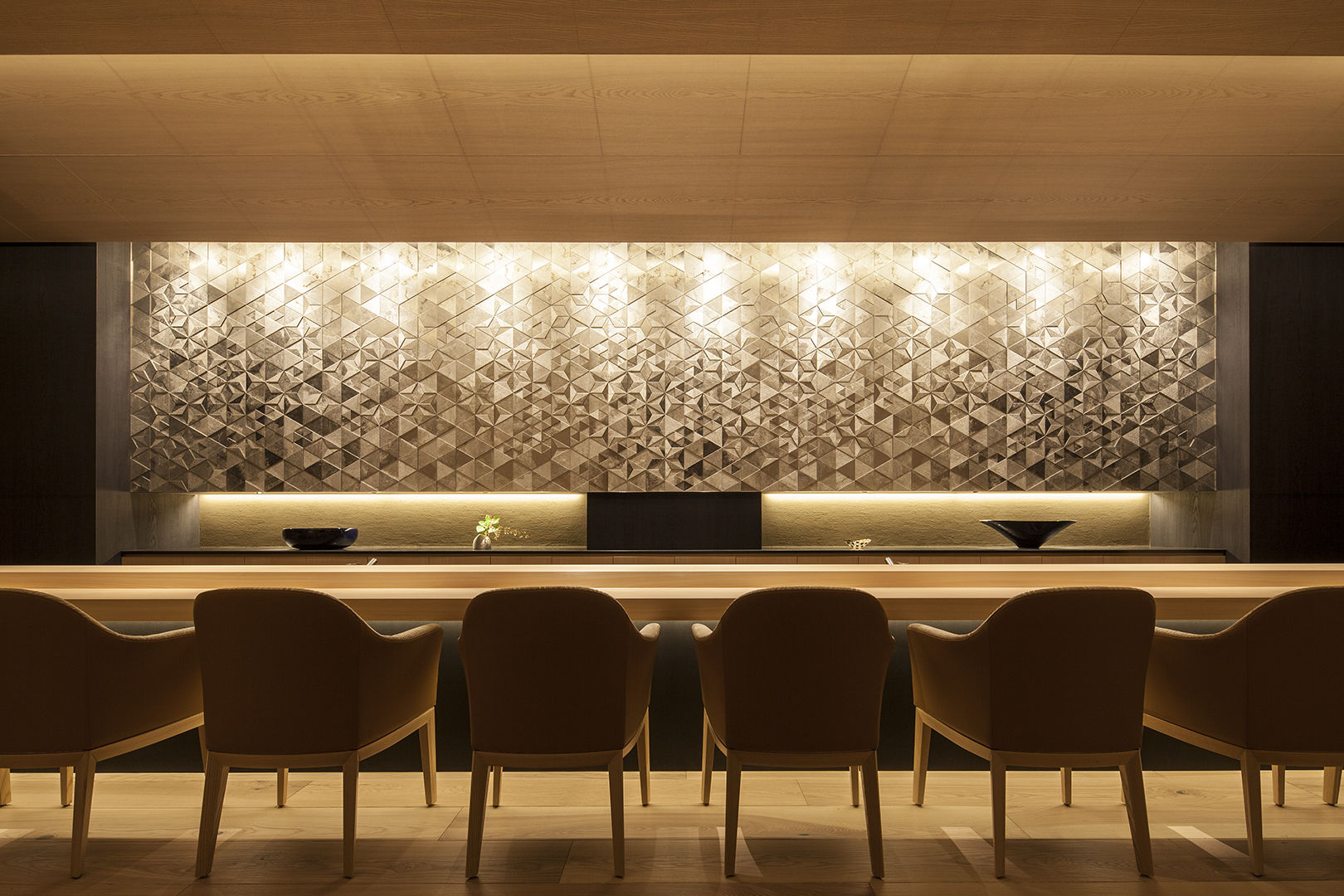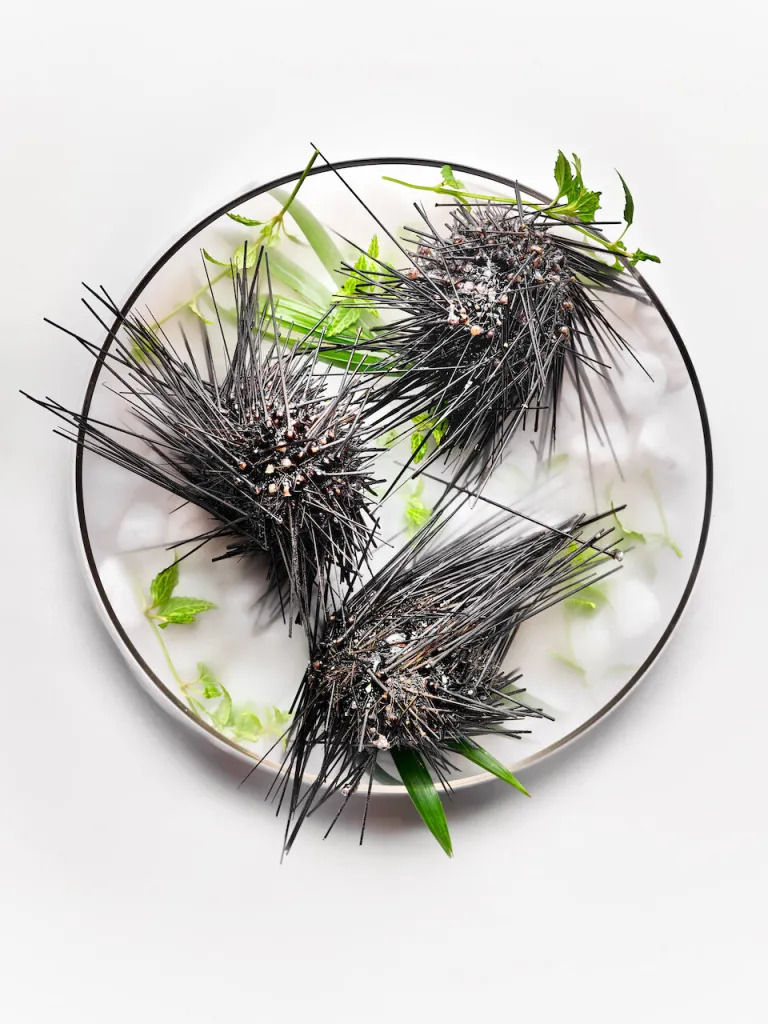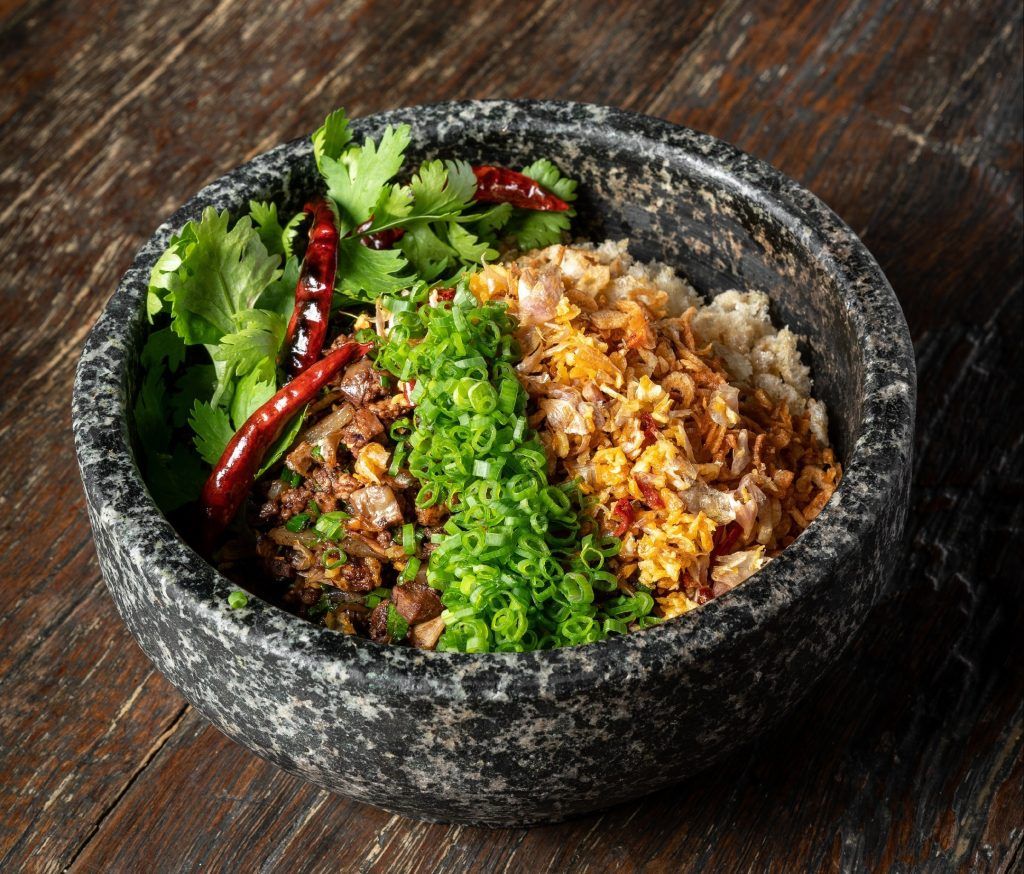As any sushi devotee who can easily explain the difference between their chutoro and otoro knows, dining at a high-end sushi bar is a sublime experience that unfolds in an understated, minimalist setting — one might even call it plain. The walls are generally unadorned, decoration is simple or even nonexistent, and the furniture tends to be unremarkable. The principle behind all this, of course, is that guests’ focus should be placed squarely on the premium ingredients that have been harvested from the sea, to savour both the quality of the fish and the technique used to prepare it. But what if there was a sushi bar that placed as much care into creating a luxurious ambience as it did into serving the finest seafood?
That’s precisely what you’ll find at Sushi Wakon, which reopened at the stunning Four Seasons Hotel Kyoto in October 2016 and was awarded one star in the Michelin Guide Kyoto and Osaka 2018, no small feat for a restaurant in its first year of operation. Let’s get the obvious out of the way: The food is fantastic. Overseen by master chef Rei Masuda, who trained under world-famous Jiro Ong, Sushi Wakon sources ingredients from Tokyo’s iconic Tsukiji Fish Market, which allows guests to enjoy some of the world’s freshest and finest ingredients in the Edomae-style sushi.

What sets a meal at Sushi Wakon apart from the rest, however, is the space itself, which has been meticulously designed to create a space that feels as thoughtful and handcrafted as the food itself. Trading the traditional austerity of sushi bars for something that’s more luxurious and memorable, chef Masuda himself played a vital role in choosing the décor for the restaurant, under the innovative notion that design elements could be paired with food just as one would pair sake or wine within the context of the meal. This was no small effort: The value of the artwork on the walls alone is worth USD150,000, more than any other restaurant in Japan has invested for art.
Under the direction of award-winning design house Strickland, Sushi Wakon pays homage to its surroundings — an 800-year-old garden and pond that’s now part of the hotel’s grounds — while still appealing to guests’ evolving tastes for sophisticated aesthetics. It’s all understated elegance inside the dining room, with every piece of furniture, fitting and tableware having been handcrafted by local artisans, including crockery from the legendary Makuzu-yaki. Naturally, some traditional elements had to be maintained. The 10-seat wooden counter is crafted from hinoki (Japanese cypress); the tree was hand-picked by owner Luke Clayton himself, who tasked a master carpenter who’s worked for Japan’s royal family to create Sushi Wakon’s centrepiece. Similarly, wooden barrels are used by the chefs behind the counter to hold rice.

The pièce de résistance of the room, however, isn’t something you’ll find in any other sushi restaurant: a mammoth tin wall that was created by local artisans and weighs an astonishing 600 kilograms. Each metal tile of the wall was handmade, and reflects the Japanese traditions of origami and kumiko. A work of art in its own right, it’s a statement piece that immediately signals to guests that this experience will be different.
“We wanted to add a little bling to high-end sushi experiences, without it being tacky or over the top,” says Clayton. “We believe that modern diners expect more now: They expect eye-catching and memorable visuals.”
In doing so, Sushi Wakon is redefining what a first-rate sushi restaurant can be, and ushering in a new wave of luxury for diners with it’s handcrafted aesthetic complementing the high quality of the food. The goal is to engage all the senses — to provide a feast for the eyes as well for the palate — and the restaurant easily succeeds on this front, offering up one of Kyoto’s finest dining experiences as a result.

According to chef Masuda, “The restaurant is a pristine canvas for the level of cuisine that my team and I provide.” Given the Michelin-star recognition, it’s apparent that others agree, and that Sushi Wakon’s innovative design choices haven’t turned off any diners.
In fact, the restaurant has very likely kicked off a design trend for high-end sushi spots. The new Hong Kong location of Tokyo’s Sushi Saito features carefully curated art pieces and tableware created by legendary Japanese artists such as Kitaōji Rosanjin, Shiro Tsujimura and Kai Tsujimura. As discerning guests come to expect more and more from top-tier restaurants, don’t be surprised if you find more Japanese restaurants following the path that Sushi Wakon has forged.












